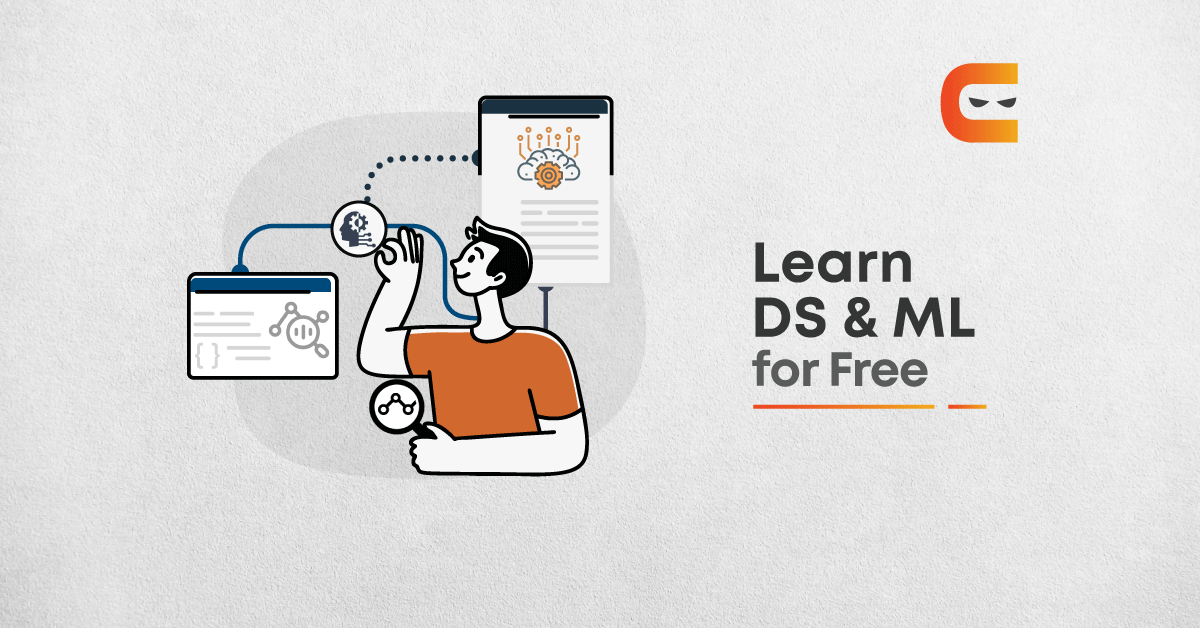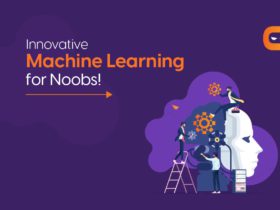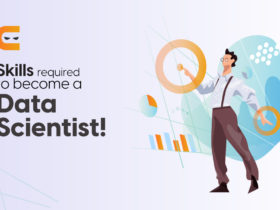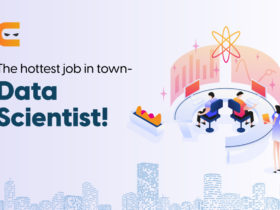Table of Contents
Introduction
In the 21st century, we are surrounded by data. An individual, knowingly or unknowingly. generates tons of data each day. Some of the most common ways that you generate data are each time you scroll through your social media, browse through an e-commerce platform, listen to music, binge content, etc. Even while you sleep, your smart watch captures data about your sleeping patterns.
Why is Data so Important And Why Should We Study it?
Data is considered the holy grail in 21st century. Each organisation tries to make sense of this huge user-generated data to understand the customer behaviour and develop more customised products, which in turn would help generate increased revenues and higher profits. Hence, it can be said that data is the new oil which inspires future innovations.
However, the tons of data generated each day are fairly complex to analyse and store because of the volume of the data and its nature – structured (relational databases) and unstructured (images and videos).
Extracting meaningful information from this data is where data science and machine learning comes into the picture. Since these are relatively new, advanced, complex and fastest-growing computer science fields, Harvard Business Review claims jobs in these fields to be the sexiest jobs of the 21st century.
Key Roles of a Data Scientist and Machine Learning Professional
The main role of a data scientist and machine learning professional is to decipher large amounts of data, analyse them and build models that predict future demand based on past data. However, this is not as easy as it sounds. For instance, the nature of the problem is fairly complex.
There are terabytes of data generated each data and not all of them are of the same type. The data can be structured, unstructured, distributed and can also have some anomalies. Hence, each data scientist and machine learning professional has five key sub-roles outlined which help them extract meaningful information from the data easily.
These are as follows:
Role #1: Data Gathering
It is rightly said that a machine learning model is just as good as the data that it is built upon. The more meaningful data that the model is based upon, the better are the insights of the model. Hence, data gathering is one of the most crucial steps to be performed by a Data Scientist and Machine Learning Professional.
Role #2: Data Cleaning
Not all the data that we receive from various sources are trustworthy. Some of the data might have some anomalies or null or garbage values. If we skip data cleansing and go ahead with the rest of the steps, our model might be skewed, resulting in inaccurate analysis. Hence it is a good practice to clean the bad data before we start with our analysis.
Role #3: Data Visualisation
Our minds are able to interpret visual data better than just plain data. That’s the primary reason why multiple types of charts are used to represent data. Hence, before we start building our machine learning algorithms, it is a good practice to map out the data to try and understand the various trends, which will help us shortlist the set of algorithms that need to be applied to the data.
Role #4: Developing Machine Learning Algorithm
This is the main job of Data Scientist and Machine Learning Professionals where they develop models which learn on the past data and configure internal mappings to predict future trends accurately. For example, for a recommendation system, the quality of the machine learning model is determined by the likelihood of the customer to select either of the recommendations given by the model.
Role #5: Data Analysis
This step helps ensure the sanctity of the analysis. Since the problem statement is fairly complex and the prediction might include never-seen-before data, data analysis helps determine the level of confidence that we can place on the model.
If the accuracy of the model is below that what was expected, the Data Scientist and Machine Learning Professional are expected to go through the previous steps again, fine-tuning several processes along the way, until the model works as accurately as expected.
What Will You Learn in this free Data Science and Machine Learning Course?
This self-paced Data Science and Machine Learning Course take you over each of the five steps that a data scientist is expected to perform. The course is divided into two parts: Data Science and Machine Learning. We have divided the course into various topics, each course has multiple videos and at the end of each topic, we assess your skills to help you understand how well you have learned the topic.
After each topic, you might also be prompted to solve coding problems on a real-world dataset, build hands-on live projects or take part in data science competitions hosted on websites like Kaggle.
All this might seem daunting at first, but Coding Ninjas is here to help you get through the course. Whenever you get stuck on a specific problem while you learn Data Science for free, you can reach out to our Teaching Assistants, who are highly skilled in this domain, through live chats or video calls.
As depicted in the table above, while most of the awesome features like doubt support and unlimited access to pre recorded videos are available to you as a part of our free course, you might want to consider upgrading to the paid version in order to access the advanced material, get a course completion and excellence certificate, peer learning assistance and placement assistance.
Syllabus
Our Data Science and Machine Learning Course are very comprehensive and probably the only course you need to complete to get started with your career in this field.
We have listed down the syllabus to Learn Data Science for free below:
Syllabus for The Free Data Science and Machine Learning Course
- Introduction to Data Science
- Introduction to Python
- Conditionals and Loops
- More on Loops
- Strings, List & 2D List
- Tuples, Dictionary, and Sets
- NumPy
- Pandas
- Plotting Graphs
- Introduction to Machine Learning
- Linear Regression
- Multivariable Regression and Gradient Descent
- Project: Gradient Descent
Syllabus for The Paid Data Science and Machine Learning Course
Data Science
- Patterns
- Functions
- Object-Oriented Programming Systems (OOPs)
- Working With Files
- Project: Case Study (Part I)
- Project: Case Study (Part II)
- Structured Query Language (SQL) – Basic
- Structured Query Language (SQL) – Advanced
- Indexing and AQLite
- Application Programming Interfaces (APIs) – I
- Application Programming Interfaces (APIs) – II
- Project: Tomato API – I
- Project: Tomato API – II
- Web Scraping – BeautifulSoup
- Web Scraping – Selenium
- Web Scraping – Advanced Selenium
- Project: InstaBot- I
- Project: InstaBot – II
- Statistics
- Descriptive Statistics
Machine Learning
- Feature Scaling
- Logistic Regression
- Project: Logistic Regression
- Classification Measures
- Decision Trees – I
- Decision Trees – II
- Project: Decision Tree Implementation
- Random Forests
- Naive Bayes
- Project: Text Classification
- K-Nearest Neighbours (K-NN)
- Support Vector Machine (SVM)
- Principal Component Analysis (PCA) – I
- Principal Component Analysis (PCA) – II
- Project: Cifar 10
- Natural Language Processing (NLP) – I
- Natural Language Processing (NLP) – II
- Neural Networks – I
- Neural Networks – II
- Tensor Flow
- Keras
- Convolutional Neural Network (CNN) – I
- Convolutional Neural Network (CNN) – II
- Recurrent Neural Network (RNN)
- Long Short-Term Memory (LSTM)
- Unsupervised Learning – I
- Unsupervised Learning – II
Prerequisites for Learning the Free Tutorial
Even though this course is based on the Python programming language, we do not place Python as a prerequisite for this course. We will be teaching Python fundamentals as a part of this course
However, since Data Science and Machine Learning are advanced computer science topics, we expect that you only start this to Learn Data Science for free if you have a good knowledge of programming fundamentals and implementation of data structures.
Types of Companies Use Data Sciences and Machine Learning
Almost all the companies across the globe use data sciences and machine learning to understand their customers better and to create targeted experiences for their users. This is what helps keep them over their competition. Let’s see some of the ways how various FAANGs use data science and machine learning:
- F (Facebook): Recommend friends, pages and posts; Show targeted advertisements
- A (Amazon): Recommend products; Show targeted advertisements
- A (Apple): Facial Recognition, Camera Pixelation and Focusing
- N (Netflix): Recommend binge-worthy content
- G (Google): Recommend solutions to all your queries
Data Sciences and Machine Learning are huge fields and the examples listed above are by no means the only way the FAANGs make use of these advanced computer science concepts.
Frequently Asked Questions
Yes, the internet has tons of resources which can help you learn Data Science on your own. However, since this is a huge and ever-evolving field, most of the content out there is either outdated or not at all beginner-friendly. As always, Coding Ninjas has your back for all things tech. We recommend you to check out our free self-paced data science and machine learning course.
We believe our free Data Science and Machine Learning course is one of the best free resource out there for learning data sciences. So what are you waiting for? Enrol for the free course now!
We at Coding Ninjas have done all the hard work and brought to you a comprehensive Data Science and Machine Learning course for free. Not only do we only provide high quality pre-recorded lectures, we also provide live doubt support through live chat or video sessions from course experts who ensure that you have an uninterrupted learning experience!
We live in a wonderful time where age is just another number. No matter what your age, as long as you’ve got the right skills and have your fundamentals in place, you can become a data scientist at any age!
Although data science is a fairly advanced field and a majority of the Data Scientists have advanced degrees like M.S. or Ph.D., if you have the right skills by the time you graduate, you can get a job in data science as well!
Key Takeaways
Help us help you get started on your journey to becoming a data scientist and machine learning professional with the help of this free self-paced course. If at any point you feel confused and need some help, log on to our platform to get your doubts resolved by connecting with our dedicated network of 2000+ teaching assistants virtually, all from the comfort and safety of your homes.
Moreover, on successful completion of the paid course, we also provide a certificate of completion, and excellence certificate as well as placement cell support to help you bag lucrative internships and placement opportunities.
By Saarthak Jain















Leave a Reply